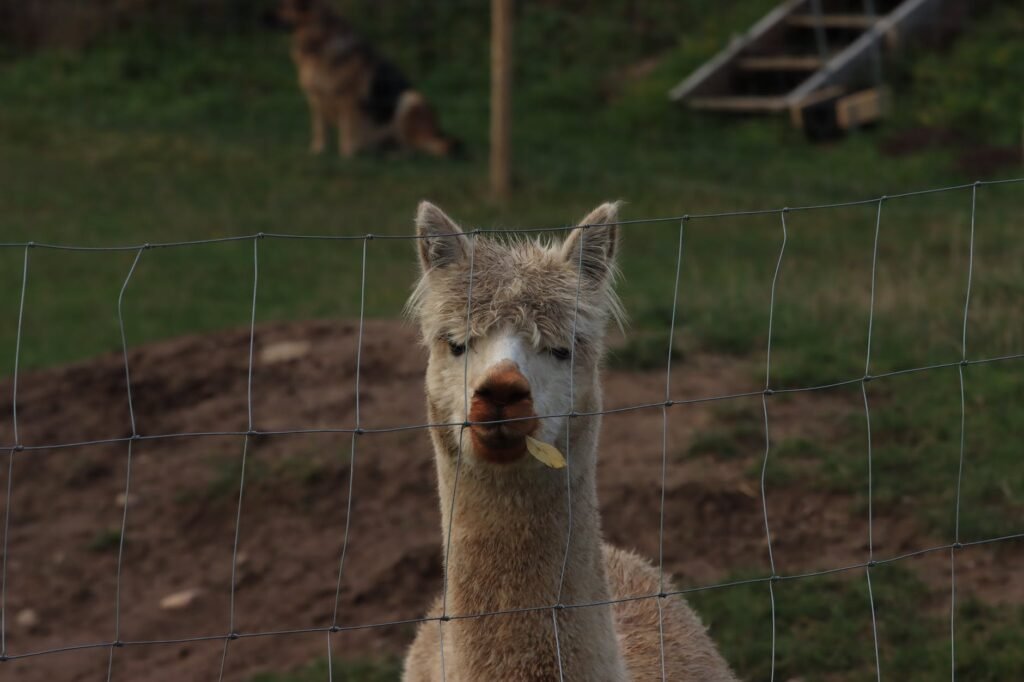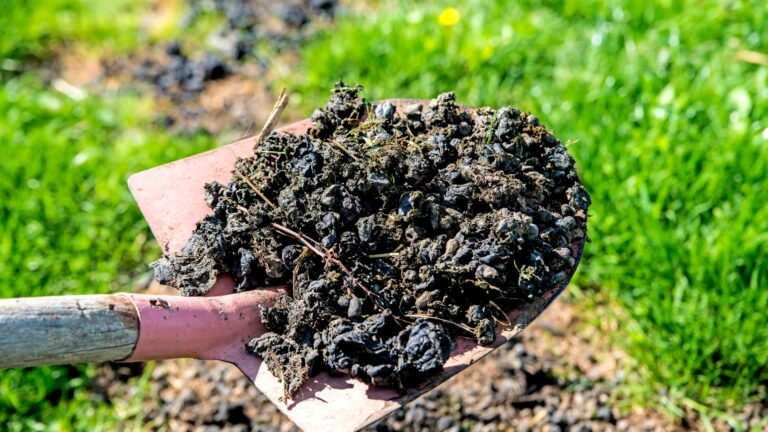Do Alpacas Have Top Teeth? A Deep Dive into Alpaca Dental Health
Ever found yourself wondering about the dental setup of alpacas? It’s a question that’s not only intriguing but also essential for those involved in alpaca care. This article aims to shed light on whether alpacas have top teeth and provide some fascinating insights about alpaca dental health.
There’s more to alpaca teeth than meets the eye. It’s not just about whether they have top teeth, but also about the structure, functionality, and care of these unique creatures’ dental systems. So, let’s dive right in and uncover the truth about alpaca teeth.
Key Takeaways
- Alpacas have a distinct dental structure that includes a set of 32 teeth: incisors, canines, premolars and molars. However, unlike most mammals, alpacas only have lower incisors that meet an opposing dental pad instead of upper incisors.
- The teeth of an alpaca continue to grow throughout their lifetime. Monitoring and addressing this constant growth is essential to avoid potential issues such as malocclusion, which can affect their grazing ability.
- Alpaca teeth play a crucial role in their digestion process. They are ruminants and rely on their teeth to grind down plant matter before it is sent to their rumen for further digestion.
- Regular dental inspections and necessary trimmings are essential elements of alpaca health management. Additionally, a diet that promotes natural grinding of their teeth can be beneficial.
- Alpacas do have top teeth, but not upper incisors; they have premolars and molars in both upper and lower jaws. This unique dental structure, combined with their lower incisors and dental pad, aids their food intake and digestion.
- Good dental practices, such as providing a high-fiber diet, feeding alpacas from ground level, regular screenings, the use of feed supplements, and maintaining a stress-free environment, can ensure better dental health and overall wellbeing of alpacas.
The Importance of Understanding Alpaca Dental Health
It’s clear that alpaca dental health extends far beyond the simple question, “Do alpacas have top teeth?” Just like in humans, an alpaca’s dental health plays a vital role in their overall health and well-being. I cannot stress enough how significant understanding this aspect is.
Our first point of focus, Alpaca teeth structure and growth. Alpacas possess a distinct dental structure that differentiates them from other animals. They have a set of 32 teeth which include incisors, canines, premolars, and molars. Interestingly, unlike most mammals, alpacas only have lower incisors that meet an opposing dental pad (instead of upper incisors).
The teeth continue to grow throughout an alpaca’s life, much like a rodent’s. If not monitored, this constant growth can lead to substantial issues, including malocclusion (improper meeting of upper and lower teeth), which can hamper their grazing ability.
Next, we look at Alpaca dental functionality. Functionally, the alpaca teeth are crucial for effective grazing. Alpacas are ruminants and rely on their teeth to grind down plant matter into a pulp, which is then sent to their rumen (the first of their four stomach compartments) for further digestion.
Lastly, our focus shifts to Caring for Alpaca dental health. Dental care in alpacas is an essential part of their health management. Regular teeth inspection and necessary trimming to prevent overgrowth or uneven wear should be part of routine care. Furthermore, taking preventative steps, such as providing alpacas a diet that promotes natural grinding of their teeth, can do wonders.

As we dive deeper into the subject, it’s evident that the importance of understanding alpaca dental health goes beyond basic curiosity and actually plays a significant role in basic alpaca care and management. Knowledge of their unique dental properties can help ensure that these charismatic creatures live the long, healthy lives they deserve.
Alpaca Dental Anatomy: Exploring the Structure of Their Teeth
Understanding the oral structure of an alpaca is fascinating. To start, alpacas only have lower incisors that meet an opposing dental pad. This unique dental makeup separates them from most mammals that typically have both upper and lower incisors.
The alpacas’ dental structure consists of 32 teeth, including incisors, canines, premolars, and molars. I’ll present this breakdown for easier comprehension:
| Teeth Type | Number of Teeth |
|---|---|
| Incisors | 6 |
| Canines | 2 |
| Premolars | 12 |
| Molars | 12 |
| Total | 32 |
One noticeable trait with alpacas is their constant dental growth. This incessant growth continues regardless of their age. Just like our nails, their teeth never stop growing. But, unlike our nails, alpacas can’t go for a quick trim at the salon. Instead, they need to rely on their diet and lifestyle to keep this growth in check.
With their lower incisors and dental pad, alpacas grind down their food effectively. They need a diet high in fibrous plants to ensure natural grinding of their teeth. This process of grinding not only helps them digest their food properly, but it also allows them to keep their tooth length in control.
However, if their diet doesn’t provide enough of these fibrous plants, their teeth growth can spin out of control rapidly. It can lead to discomfort, malocclusion, and sometimes severe health problems. This fact highlights the crucial need for regular inspection and trimming of alpacas’ teeth.
Indeed, keeping an eye on the alpaca dental health is vital. It plays a significant role in their overall well-being and longevity, thus should not be overlooked. In the end, their unique dental anatomy requires specialized care to keep them healthy and happy.
Do Alpacas Have Top Teeth? Debunking the Myth
Care to take a wild guess? The answer might surprise you! Alpacas do have top teeth. But hold on, not in the way you’d think. Alpacas indeed have molars in the upper jaw. But unlike humans and many other animal species, alpacas are devoid of upper incisors or front teeth.
To demystify this further, let’s delve into the unique dental structure of these fascinating animals. First off, they don’t have top incisors. Instead, they have a hard, gum pad in their upper front jaw where we’d otherwise expect incisors to be. This dental composition helps them tear grass and other vegetation while grazing.
On the lower jaw, alpacas do have front teeth or lower incisors. These incisors, along with the upper dental pad, come into use while grazing. So when you observe an alpaca grazing, you’ll notice it using its lower incisors to ‘rip off’ the vegetation against the upper dental pad. That’s precise and efficient, isn’t it?
In the back of the oral cavity, alpacas have premolars and molars, both in their upper and lower jaws. These facilitate effective chewing and grinding of the fibrous plants that largely form an alpaca’s diet.
Ultimately, the rate of tooth growth and wear for an alpaca directly influences their dental health. If the teeth aren’t grinding against the food sufficiently or if the diet doesn’t have enough fibrous content, there could be an imbalance leading to overgrowth of teeth.
Keeping an eye on your alpaca’s dental health is important. A change in their eating habits, weight loss, or the presence of undigested food in the droppings could indicate a dental problem, warranting immediate attention. Don’t let the myths cloud your understanding of alpaca dental health. This knowledge will help you ensure your alpacas live long, healthy lives.
Alpaca Dental Functionality: How Their Teeth Help in Digestion
Diving deeper into the fascinating world of alpaca dental health, it’s essential to comprehend how their unique teeth structure aids digestion. As mentioned, alpacas have a total of 32 teeth. These include incisors, canines, premolars, and molars. However, the intriguing fact that sets alpacas apart from other mammals is their lack of upper incisors.
The interplay of the lower incisors against the dental pad in the upper jaw, instead of standard teeth, effectively assists alpacas in ripping off vegetation. Furthermore, the robust premolars and molars located in the back of their oral cavity play a significant role in their grazing habits. These teeth help in the meticulous chewing and grinding of fibrous plant material, thus aiding in effective digestion.
The cyclic nature of tooth growth in alpacas is also worth noting. Thanks to their diet of predominantly fibrous content – a crucial factor influencing the rate of tooth wear – alpacas experience constant tooth growth throughout their lives. But what if these tough dietary essentials lack in an alpaca’s meal? It’s then that the risk of tooth overgrowth may come into play, making careful dental monitoring for these animals all the more vital.
Our observations of alpacas can provide insightful details about their dental health. For instance, changes in their eating patterns, weight loss, or even the presence of undigested food in their droppings could be signs of potential dental issues.
Indeed, understanding alpaca dental health does not just shed light on the unique qualities of these adorable creatures. It’s a crucial aspect of effective alpaca care and management – a piece of knowledge that can significantly assure their health and longevity. It’s safe to say that grasping the role of alpaca teeth in digestion is far from toothless trivia – it’s an indispensable part of being an informed alpaca caretaker.
Dental Care for Alpacas: Tips and Best Practices
Having looked at the unique dental structure of alpacas, it’s now time to give keen focus on their dental care practices and provide handy tips. This is with a strong regard for prevention being better than cure.
Yes, like most animals, alpacas too are prone to dental diseases. Apart from the problems caused by the constant growth and wear of their teeth, some alpacas may suffer from periodontal disease. This condition may cause gaps between the molars and gums where food can lodge, leading to gum infection and eventual tooth loss.
To prevent this, it’s essential to maintain a high-fiber diet for your alpacas. Rough, fibrous feed such as hay and grasses assist in naturally grinding down the teeth, reducing the risk of overgrowth. In addition, feeding alpacas from ground level can be helpful, as they are adapted to graze with their heads down. This position aligns the incisors with the dental pad, promoting an effective and even wear of teeth.
The highlight of the best practice for alpaca dental care is regular screenings and trimmings by a professional. I can’t emphasize enough how vital this is. Failing to ensure regular checkups could cost your alpaca its health, and you, a lot of time and money. Dental screenings should be part of your routine husbandry practices, and any signs of dental disease, such as drooling, difficulty feeding, or unusual behavior should be addressed immediately.
Consider utilizing feed supplements if the diet lacks necessary nutrients. They promote good health, not just for their teeth but for their overall well-being.
Moreover, while alpacas are generally hardy creatures, they can get stressed out. Make sure the environment is kept calm; this will also make any dental checks or procedures much smoother.
The key to successful alpaca ownership is understanding that their unique teeth are tying directly to their essential life functions.








Our picks
Alpaca & Wool Felted Sole Inserts: Comfy Upgrade?
Best Alpaca Socks for Hiking: Ultimate Comfort and Durability on Trails
Best Alpaca Halter for Comfort and Control